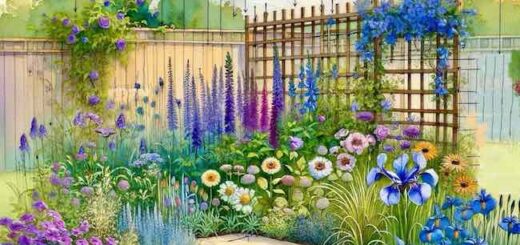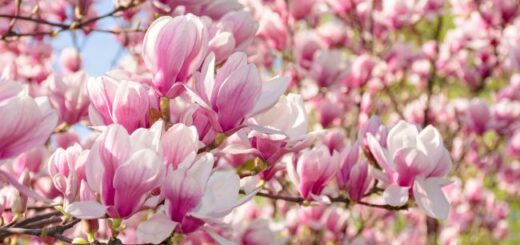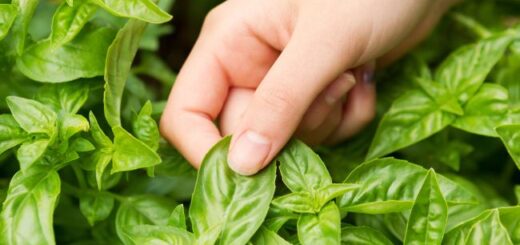Gardening Calendar 3rd Week in January ( audio available )

Click Here for Audio Google deep dive podcast review of the GardenAdvice Calendar 3rd week in January and GardenAdvice features as a downloadable .WAV file
Preparing for Spring
This period is crucial for laying the groundwork for a successful spring garden. Activities include sowing seeds indoors, taking cuttings, preparing compost, and tending to bulbs.
Expert Guidance
GardenAdvice strongly emphasizes the value of expert guidance for gardeners of all levels. They offer a free online advice service and highlight the benefits of their personalised gardening courses.
Winter Care
Protecting plants from harsh weather and managing pests are essential winter tasks. Advice is provided for winter rose care, applying a winter wash to control pests, and dealing with lawn issues.
Community Engagement
GardenAdvice fosters a sense of community through their Young Gardeners Sunflower Competition and by sharing inspiring gardening stories.
Key Actions & Advice This Week
- Weather: Be prepared for frost and snow
- Protect tender plants: Use horticultural fleece, cloches, or even old sheets/blankets to protect foliage overnight, especially for any borderline-hardy or young plants. Secure the coverings well to prevent wind from dislodging them.
- Insulate containers: If you have containers or pots outside, consider raising them on pot feet or bricks to allow better drainage, and insulate them with bubble wrap or burlap to prevent roots from freezing.
- Mulching: Add an extra layer of mulch around the base of perennials and shrubs to protect their root systems from hard frost.
- Sowing: Start dahlias, sunflowers, cosmos, pyrethrum, and sweet peas indoors
- When to sow: These seeds can be started now in seed trays or modules in a heated greenhouse or on a bright, warm windowsill. A propagator or heat mat will help maintain consistent temperatures for germination.
- Soil mix: Use a seed-starting compost that is light, free-draining, and sterile to minimize the risk of damping off.
- Care and light: Keep seedlings near a light source to prevent them from getting leggy. If using a windowsill, rotate the trays daily for even growth. Water carefully to maintain moisture without waterlogging the compost.
- Bulbs: Bring potted iris reticulata and daffodils indoors to encourage flowering
- Indoor forcing: If you’ve previously prepared potted spring bulbs in a cool, dark location, now is the time to bring them into a slightly warmer, well-lit spot.
- Temperature transition: Move the pots gradually from cool to warmer conditions to reduce shock. Once indoors, place them where they can receive bright, indirect sunlight.
- Aftercare: Keep soil evenly moist but not waterlogged. When flowers finish, allow foliage to die back naturally before storing bulbs for next year.
- Cuttings: Take cuttings from Skimmia japonica and hydrangeas
- Timing and method: For Skimmia japonica, semi-ripe or hardwood cuttings can be taken. For hydrangeas, hardwood cuttings are best taken from mature stems. Cut sections around 6–8 inches long.
- Preparation: Remove any soft tips and leave only a few leaf buds on each cutting. Dip the base in rooting hormone powder (optional) and place into a cutting compost or a 50:50 mix of peat-free compost and horticultural grit.
- Environment: Keep cuttings in a sheltered spot, ideally a cold frame or unheated greenhouse. Water sparingly and check periodically for root development (which usually takes several weeks to a couple of months).
- Compost: Add leaves, cover with carpet, and check for hibernating wildlife
- Layering: Gather any remaining fallen leaves and mix them into your compost bin or heap in thin layers. This helps balance ‘browns’ (carbon-rich material) with ‘greens’ (nitrogen-rich material).
- Insulation: Cover the compost heap with an old piece of carpet or plastic sheet to help retain heat and speed up decomposition over the cold months.
- Wildlife check: Before adding new material or turning the compost, gently check for hedgehogs, toads, or other small creatures that might be hibernating in warm spots.
- Winter Wash: Apply to fruit trees, roses, and fruit bushes
- Purpose: A winter wash (often a dormant oil or organic-based treatment) helps control overwintering pests such as aphids, scale insects, and mites, as well as fungal spores.
- Application: Apply on a calm day when temperatures are above freezing, ideally following the manufacturer’s instructions. Thoroughly coat the trunk, branches, and stems to reach hidden crevices.
- Safety: Wear protective clothing (gloves, goggles) when handling horticultural sprays, and ensure good ventilation if applying inside a greenhouse or polytunnel.
- Lawn: Spike the lawn to improve drainage and root depth
- Why spike: Aerating helps alleviate compaction, improves drainage, and encourages deeper root growth, leading to a healthier lawn come spring.
- Tools: A lawn aerator, garden fork, or hollow-tine aerator can be used. Aim for holes 2–3 inches deep, spaced every few inches.
- Aftercare: Brush a top-dressing mixture of loam and sand into the holes if your lawn is prone to waterlogging. Avoid heavy foot traffic if the lawn is soggy or frozen.
- Vegetable Garden: Plant garlic bulbs and asparagus crowns
- Garlic: Choose a sunny, well-draining spot. Break bulbs into individual cloves and plant each clove pointy-end up about 2 inches deep and 6 inches apart.
- Asparagus: Prepare a well-draining bed amended with plenty of organic matter. Plant crowns in a trench, fanning out the roots, and cover lightly with soil. Asparagus is a long-term crop—avoid harvesting the first year to allow crowns to establish.
- Frost precautions: Cover newly planted garlic or asparagus with fleece if a hard frost is forecast, especially if they’ve just been planted.
- Wisteria: Prune winter shoots and train growth
- Timing: January is a good time for winter pruning of wisteria as it’s fully dormant and leafless, making the structure easier to see.
- Pruning method: Cut back summer’s side shoots to two or three buds from the main framework. This encourages flowering spurs. Remove any dead or tangled growth.
- Training: Tie in new leaders to a sturdy support or trellis. Keep an eye out for any stems that need guiding to fill gaps in the framework.
General Tips for Mid-Winter Gardening
- Stay off frozen or waterlogged soil: Walking on sodden or frozen ground can compact soil, damaging its structure.
- Clean and sharpen tools: With fewer outdoor tasks, take time to clean, sharpen, and oil your tools so they’re ready for the busier spring period.
- Monitor for pests indoors: If you’re bringing plants inside, keep an eye out for common indoor pests like fungus gnats, spider mites, and mealybugs.
By giving attention to each of these tasks and preparing for still-harsh winter conditions, you’ll ensure your plants and garden structures make it through the season in good shape—ready to flourish once spring arrives.
Ongoing Winter Gardening Tasks
Winter Rose Care
Ensure roses are properly maintained during dormancy. Winter is a crucial period for rose care, as proper maintenance sets the stage for healthy growth and abundant blooms in the spring and summer.
MyGardenTeam
Consider utilising this service for personalised gardening support. At GardenAdvice, we’re dedicated to transforming and revitalising gardens across the country. Our MyGardenTeam service… Follow some of the recent MyGardenTeam service announcements
Gardening Courses
Take advantage of GardenAdvice’s gardening courses, especially for beginners. “Taking a gardening course from GardenAdvice.co.uk in your own garden offers a range of benefits tailored specifically to your needs…”
Highlights From GardenAdvice This Week
- Young Gardeners Sunflower Competition: Encourage young gardeners to participate in this creative competition.
- Success Story: Sally’s garden transformation in Wiltshire after using GardenAdvice services is a compelling testimonial.
New in 2025: GardenAdvice is promoting a new gardening course for 2025, inviting people to “Embrace the Future of Horticulture.” Details being released shortly





